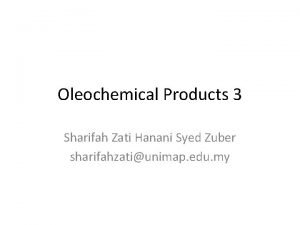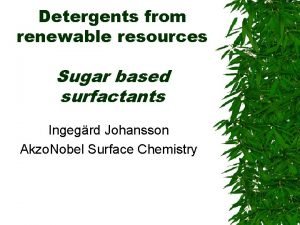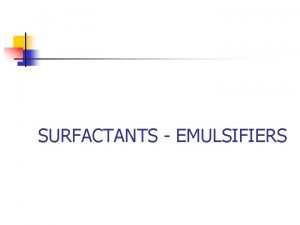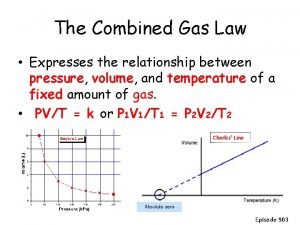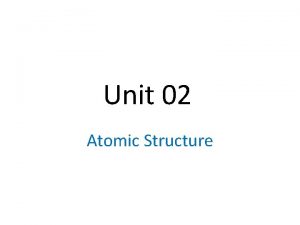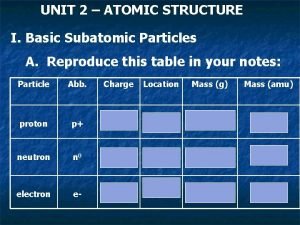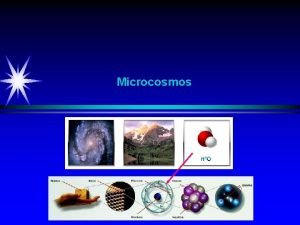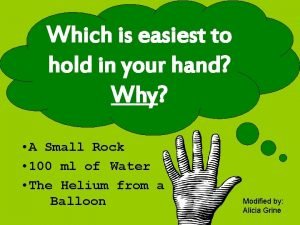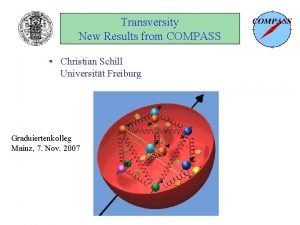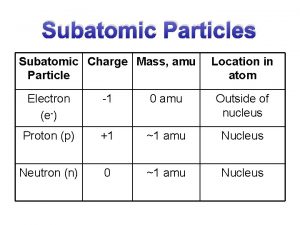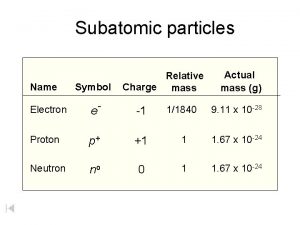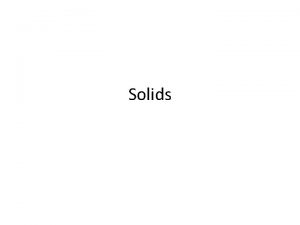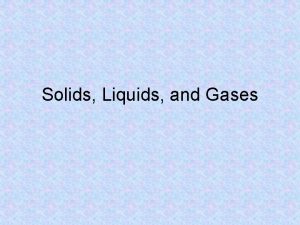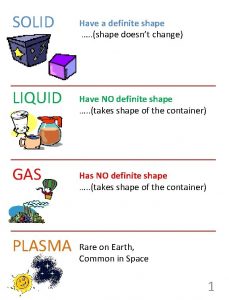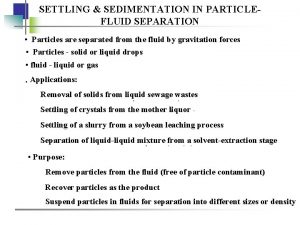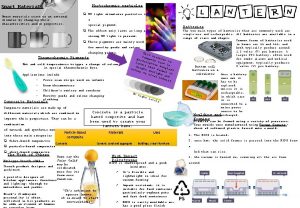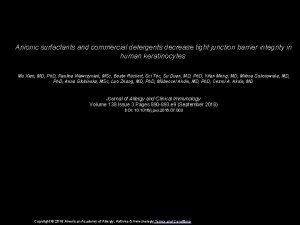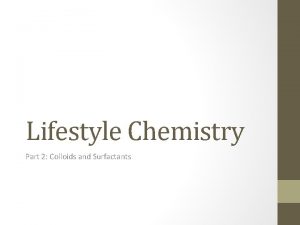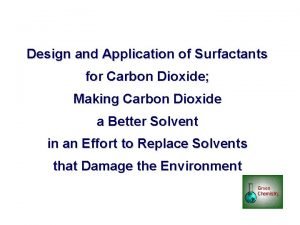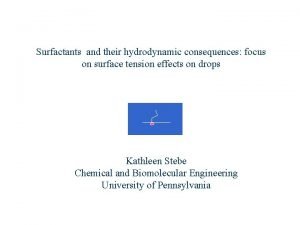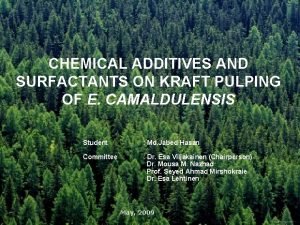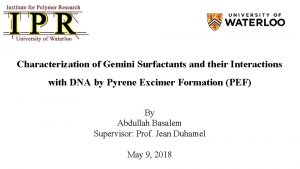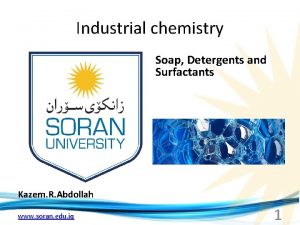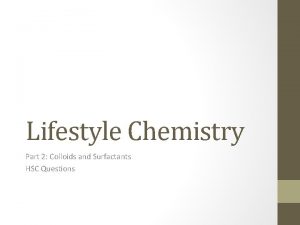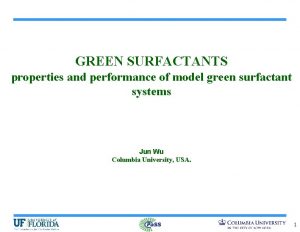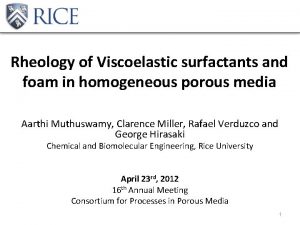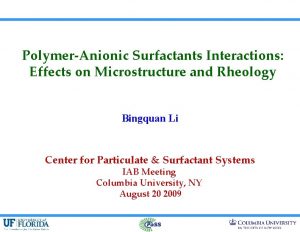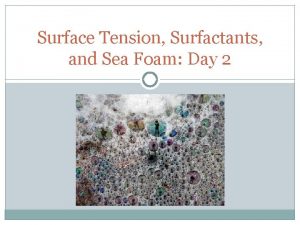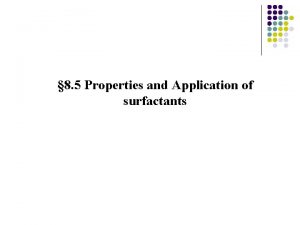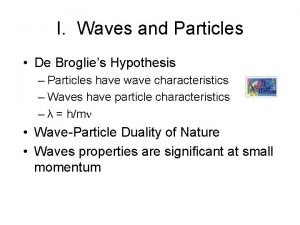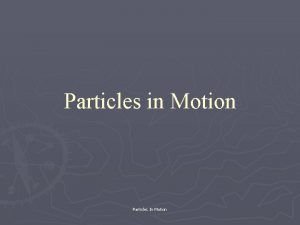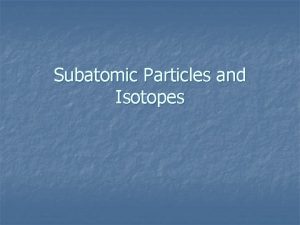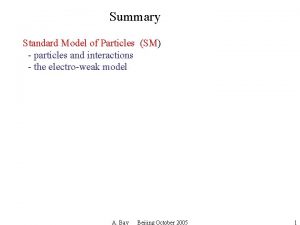Particles as surfactants and antifoams N D Denkov






















- Slides: 22

Particles as surfactants and antifoams N. D. Denkov and S. Tcholakova Department of Chemical Engineering, Faculty of Chemistry, Sofia University, Sofia, Bulgaria Discussion at COST D 43 Training School “Fluids and Solid Interfaces” Sofia, Bulgaria, 12– 15 April, 2011

Problem 1 Energy of particle adsorption

ER 1 -2 EDIS Particle adsorption energy = - a 2 12(1 -cos )2 12 = 30 m. N/m; = 90 a, nm EA, J EA/k. T 1 - 9. 4 10 -20 - 23 10 - 9. 4 10 -18 - 2300 100 - 9. 4 10 -16 -230000

Adsorption energy vs particle size 12 = 30 m. N/m; = 90 EA >> k. BT for a > 1 nm

Adsorption energy for particles with different contact angles 12 = 30 m. N/m; a = 10 nm , deg ER 1 -2/k. T EDIS/k. T EA, J 10 68. 78 -69. 28 - 0. 5 - 2. 2 10 -21 90 0 -2300 - 9. 4 10 -18 150 -7430 -575 -8005 - 3. 3 10 -17

Adsorption energy vs contact angle 12 = 30 m. N/m; a = 10 nm Significant effect of contact angle on the energy of adsorption !

Desorption energy Desorption is favored into the phase which wets better the particle!

Desorption energy vs contact angle 12 = 30 m. N/m; a = 10 nm , deg ED, J ED/k. T 10 2. 2 10 -21 0. 5 90 9. 4 10 -18 2300 150 1. 6 10 -19 41

Desorption energy vs contact angle 12 = 30 m. N/m; a = 10 nm Maximum ED at cos = 0 = 90

Problem 2 Interfacial tension of particle adsorption monolayers Gibbs isotherm Ideal 2 -dimensional gas Dilute adsorption layer Low surface coverage Surface coverage

Surface tension at 30 % surface coverage Close packing of particles on interface Amin, nm 2 Surfactant 0. 4 Particle (10 nm) 346. 4 , , molec. /m 2 2. 5 1018 2. 7 1015 0. 75 1018 8. 2 1014 , m. N/m 69 72

Volmer adsorption isotherm Surface tension at 80 % surface coverage Amin, nm 2 Surfactant 0. 4 Particle (10 nm) 346. 4 , molec. /m 2 , m. N/m 2. 5 1018 2. 7 1015 31 72 Particles are very inefficient at reducing surface tension even at very high surface coverage

Problem 3 Formation of complete monolayer Volume fraction Specific surface area ADR Monodisperse Polydisperse VD S Mean volume surface radius

Formation of complete adsorption layer Close packing of particles on interface Particles required to cover the specific drop surface area Number of particles Volume of particles Mass of particles

Concentration of the particles Particles in continuous phase Particles in dispersed phase

Particles in continuous phase P = C = 1 g/ml a = 30 nm R 32 = 1 m Particles Surfactant 25 times lower C are sufficient to cover the same drop area by surfactant molecules, 1. 5 mg/m 2

Problem 4 Pressure for rupturing film stabilized by particle monolayer

Capillary pressure vs film thickness The maximal pressure at h = 0 the critical capillary pressure for film rupturing

Critical capillary pressure vs contact angle Critical pressure decreases with increasing of contact angle and with increasing the distance between particles

Optimal contact angle for film stability Desorption energy Critical pressure 12 = 30 m. N/m a = 10 nm 30 80 ED > 40 k. T (irreversible adsorbed) PCMAX > 0. 7 MPa (b/a = 1. 5) Very high critical capillary pressure !

Destabilization of films Particles can aggregate on the surface and forming empty regions in the film. The stability is much lower !

Thank you for your attention !
 List of surfactants and hlb values
List of surfactants and hlb values Wholesale sugar based surfactants
Wholesale sugar based surfactants Application of surfactant
Application of surfactant Gas variable relationships
Gas variable relationships Solid liquid and gas particles
Solid liquid and gas particles The properties of solids liquids and gases
The properties of solids liquids and gases Three subatomic particles and their charges
Three subatomic particles and their charges Subatomic particles table
Subatomic particles table Neutrinous
Neutrinous Motion of particles in solids, liquids and gases
Motion of particles in solids, liquids and gases Solid heat
Solid heat Point like particles
Point like particles How electrons are arranged in an atom
How electrons are arranged in an atom Pulleys a level maths
Pulleys a level maths Mass of subatomic particles in amu
Mass of subatomic particles in amu Name of symbol
Name of symbol How do particles move in a liquid
How do particles move in a liquid Kinetic theory of solids
Kinetic theory of solids Solid liquid gas plasma
Solid liquid gas plasma Hindered settling
Hindered settling The search for fractionally charged particles has–
The search for fractionally charged particles has– 3 states of matter venn diagram
3 states of matter venn diagram Photochromic particles
Photochromic particles
